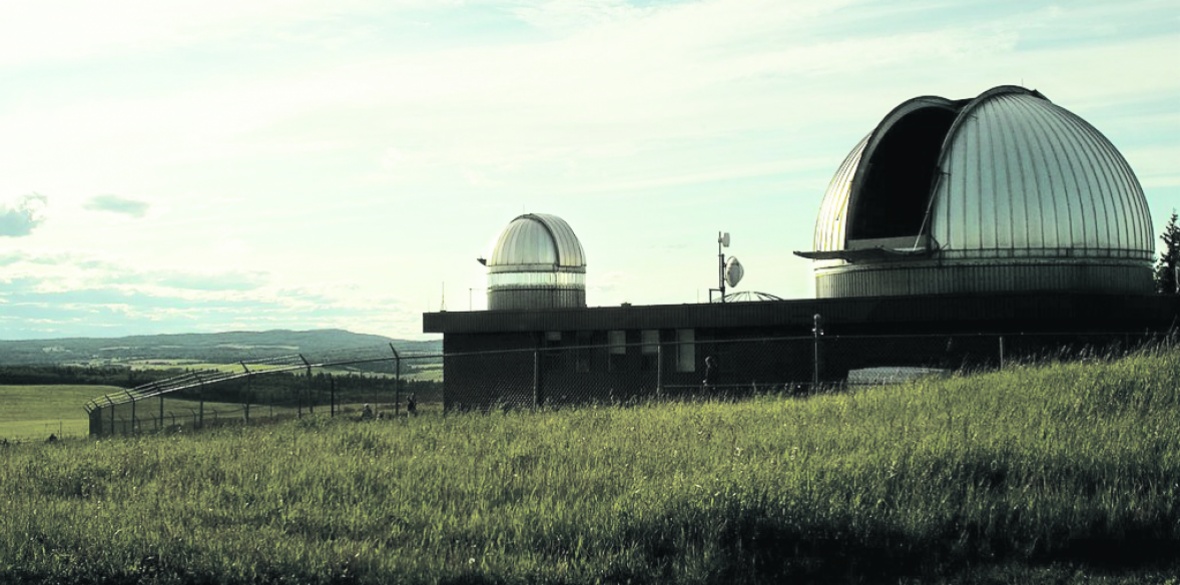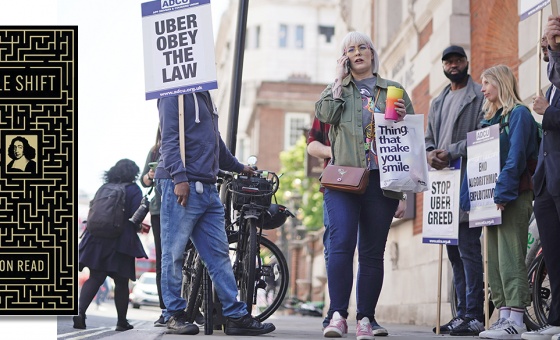This is the last article you can read this month
You can read more article this month
You can read more articles this month
Sorry your limit is up for this month
Reset on:
Please help support the Morning Star by subscribing here
FAR away in space there are two very heavy and very dense stars orbiting each other extremely fast.
The lighter star is also spinning. Instead of rotating once every 24 hours, like our planet, it spins two-and-a-half times every second.
The pair of stars move around each other (as the Earth orbits the sun once a year) every four hours and 44 minutes.
Astrophysicists who have been monitoring the pair since 2000 and measuring the way light from the lighter spinning star reaches us as it moves relative to the heavier one.
This month they announced that they believe that the heavy star is distorting the space and time in the space around it, making the light from the small star travel differently depending on its relative position.
The starlight is evidence of a dizzying rippling of spacetime, caused by the immense speed and mass of the star.
Another group of scientists this month reported what they had found by looking at a crumb of rock. It came from the middle of a meteorite that fell to Earth in Mexico 51 years ago last Saturday.
By investigating what elements are present, baked into the meteorite, they want to find out about the conditions in which the meteorite first formed.
It is believed that this formation happened when the solar system was nothing but an extremely hot cloud of particles, before some had coalesced to form our sun.
The researchers looked at the chemical characteristics of the meteorite contents and reported their surprise at finding small crystals of silicon carbide.
Silicon carbide is something we can make synthetically. It is used in sandpaper and bulletproof vests, and its shimmery black crystals as gemstones in jewellery.
Finding it in the meteorite was unexpected, because it was thought that it would have been so hot when the meteorite formed that the crystals would have melted.
This crumb of rock helped these researchers imagine what it was like before the sun even existed, almost unimaginably long ago.
More than 200 metres deep in the ocean live relatives of starfish called “brittle stars.” There are over 2,000 species that we know of, living all over the world, some as deep as 6km underwater.
Brittle stars are extraordinarily alien; they have no brain, but each arm works separately as a sensor and to move them across the sea floor.
Understanding the way that their nerves and organs join up can only be approached from the outside, reimagining what possible ways the co-ordination of such an unusual body might be possible.
One particular aspect confounds our expectations. In almost every other species, the number of limbs in the “body plan” is conserved, that is, members of the same species tend to have the same number of limbs — in fact it’s a good way of identifying them.
But some brittle stars have between four and 10 arms, depending on the individual.
It’s hard to imagine how an animal can co-ordinate itself without a brain, and without any fundamental patterns to the limbs.
Even moving cannot proceed with the normal patterns we associate with walking or crawling. How could you even know which direction to go in? And yet they manage just fine.
In autumn last year, researchers published a theory about how signals might pass from one arm to another, triggering sequential movements in arms that allocate temporary roles to each adjacent arm so that it knows which way to paddle.
Comparing the predictions with how brittle stars appear to move when they are walking, it’s the best theory we’ve got so far.
Stories about scientific research focus on what we now know. Although these ideas seem to cover the furthest and oldest, the strangest and the most complex systems we can imagine, what we know about the universe pales into insignificance compared to what we don’t know. In front of these tiny specks of understanding loom aeons of unknown.
Why should we care at all about these things?
The way that deep-sea brittle stars walk has never concerned most of us before and may never do so again.
What’s more, it may be that the practical use of this information is close to zero. There may be no way to monetise or exploit the ideas uncovered here.
It may be that we won’t be able to use what we know even in constructing the compassionate and just society we want and so desperately need.
More optimistic people hope that science can save us from the headache of fake news. The famed objectivity of scientific facts seems like a light in the darkness.
Even if an Indiana court tries to legislate the value of pi as 3, they can’t change the way that circles really are.
If you can show something to be a scientific fact, then maybe you can win your arguments once and for all.
But this reasoning doesn’t take us very far. As we discussed in a previous column, science as a rubber-stamping authority on co-opted evidence is a pathetic substitute for a real argument.
Scientific evidence is susceptible because the answers that can be found in material evidence are only as good as the questions being asked.
There are very few answers to the important political and human questions of “How We Must Live” to be found in science.
Instead, what science can offer us is the opportunity to embrace the mystery and majesty of the universe, of which we understand so little.
It surprises us and challenges us to imagine reality in totally different ways.
Looking at the non-human world and describing it together with the stories of scientific theory connects us in humanity across time and space. It allows us to share the joy of exploration of the physical world to which we all equally belong.










